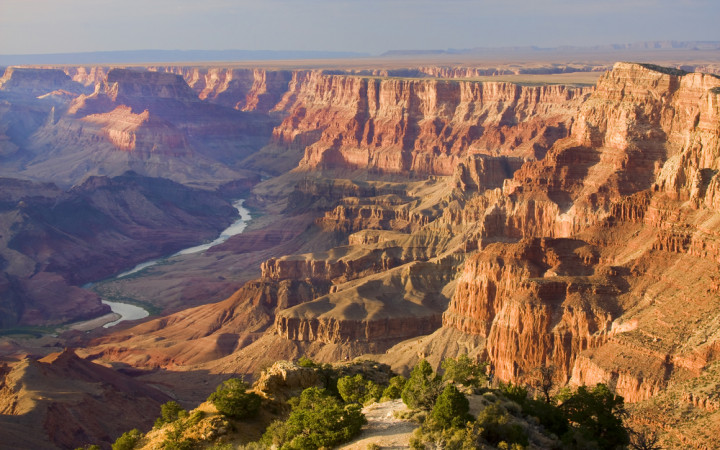Did you know that a river can carve out a deep ravine between cliffs over the course of millions of years? These ravines are called "canyons" or "gorges." In Arizona, you can see a grand example of this phenomenon.
The Grand Canyon is an incredibly steep canyon that has been carved out by the Colorado River. Located in Arizona, most of the Grand Canyon is within Grand Canyon National Park, which was one of the first national parks in the United States. Today, nearly 5 million people visit the Grand Canyon every year.
The size and beauty of the Grand Canyon is enough to overwhelm the senses. Following the course of the Colorado River, the Grand Canyon stretches for 277 miles.
At its widest point, it is approximately 18 miles wide. And deep? You bet it's deep! At its deepest point, the Grand Canyon is approximately 6,000 feet — more than a mile! — deep.
If you visit the Grand Canyon, you can see vast expanses at park overlooks. You can also hike trails down into deep gorges, take boat tours on the Colorado River as it passes through the Grand Canyon, or even ride a burro through the canyon to an overnight camping spot! The sights, including ancient rocks and interesting wildlife, are like nothing else in the world!
Although it's very deep, the Grand Canyon can't claim the title of deepest canyon in the world. That honor goes to the Kali Gandaki Gorge in Nepal, which scientists estimate is more than 18,000 feet — almost 3.5 miles! — deep.
In addition to gorgeous natural beauty, the Grand Canyon offers scientists a place to view almost 2 billion years' worth of the Earth's geological history. As the Colorado River did its work, slowly eroding layer after layer of rock, the Earth's tectonic plates in the area shifted to push the areas on each side of the river to higher elevations.
What these processes left behind are steep rock walls that show scientists how the area changed over the course of time. Geologists believe the Grand Canyon provides one of the most complete geologic columns on Earth.
For years, scientists thought the Grand Canyon was 5 million to 6 million years old. More recent studies, though, show that it may be as much as 17 million years old.
The park is a treasure trove for geologists and archaeologists. Grand Canyon National Park has recorded more than 4,800 archaeological resources in a study of just 3 percent of the park's area.
The oldest human artifacts that have been found are about 12,000 years old and appear to be from the Paleo-Indian time period. These artifacts, such as primitive tools and bowls, give researchers a glimpse into what life was like thousands of years ago.




